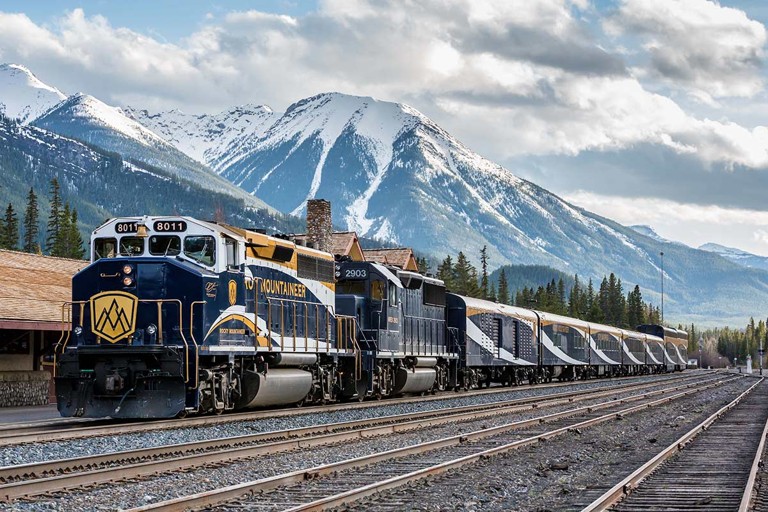After several years of uncertainty in the travel industry, Canada’s iconic Rocky Mountaineer train is once again rolling through the Rockies, rekindling the magic of rail tourism. With panoramic glass-domed carriages and luxury service, the train’s return marks a hopeful resurgence for Canadian tourism—and for travelers eager to rediscover the country’s landscapes at a slower, more thoughtful pace.
The Rocky Mountaineer suspended operations for most of 2020 and 2021 due to pandemic restrictions, leaving thousands of travelers disappointed and local economies at a standstill. Its reintroduction has brought fresh optimism to British Columbia and Alberta, where the route weaves through dramatic mountain passes, turquoise rivers, and postcard-perfect towns like Banff, Kamloops, and Jasper.
This season’s revival includes expanded routes and upgraded amenities designed to enhance passenger comfort. The train’s flagship service, the ‘First Passage to the West,’ now offers curated dining experiences highlighting regional ingredients—such as wild salmon, Alberta beef, and Okanagan wines. Travelers can also enjoy guided storytelling from onboard hosts who share local history, Indigenous culture, and tales of railway pioneers.
Tourism experts say the renewed interest in rail travel reflects a broader shift toward sustainable and experiential tourism. Unlike air travel, rail journeys leave a smaller carbon footprint while immersing passengers in the geography they traverse. “There’s something timeless about watching the landscape unfold outside your window,” said travel writer Erin Hughes. “It’s travel that invites reflection rather than rush.”
Communities along the route are also benefiting from the train’s return. Hotels, tour operators, and restaurants that rely heavily on the seasonal influx of rail tourists report surging bookings. In Kamloops, for example, business owners say the Rocky Mountaineer’s revival has brought the buzz of summer back to local streets. For many small towns, the train represents both economic stability and cultural pride.
The Rocky Mountaineer company has also invested in sustainability, introducing a program that offsets carbon emissions through reforestation and renewable energy projects. Passengers are encouraged to participate by choosing eco-upgrade options that support conservation efforts along the route. Company executives say they want the journey to reflect not only beauty but also responsibility toward the environment it celebrates.
As the train winds through the snow-capped peaks and emerald valleys of Western Canada, its rhythmic hum carries more than just passengers—it carries hope. The Rocky Mountaineer’s return symbolizes renewal for an industry, a reminder of the enduring romance of rail, and an invitation to rediscover the landscapes that have long defined the Canadian imagination.
